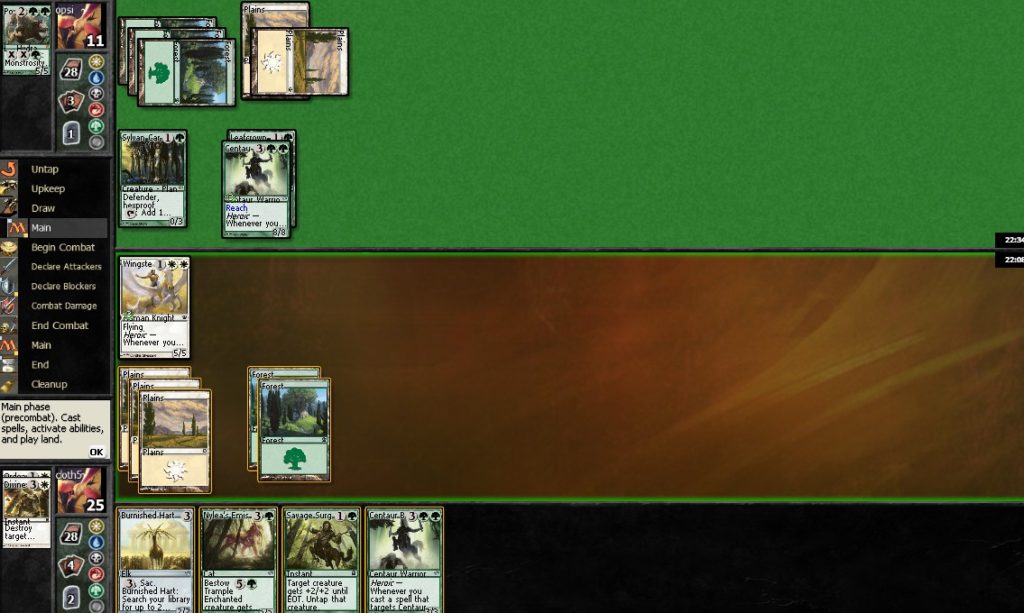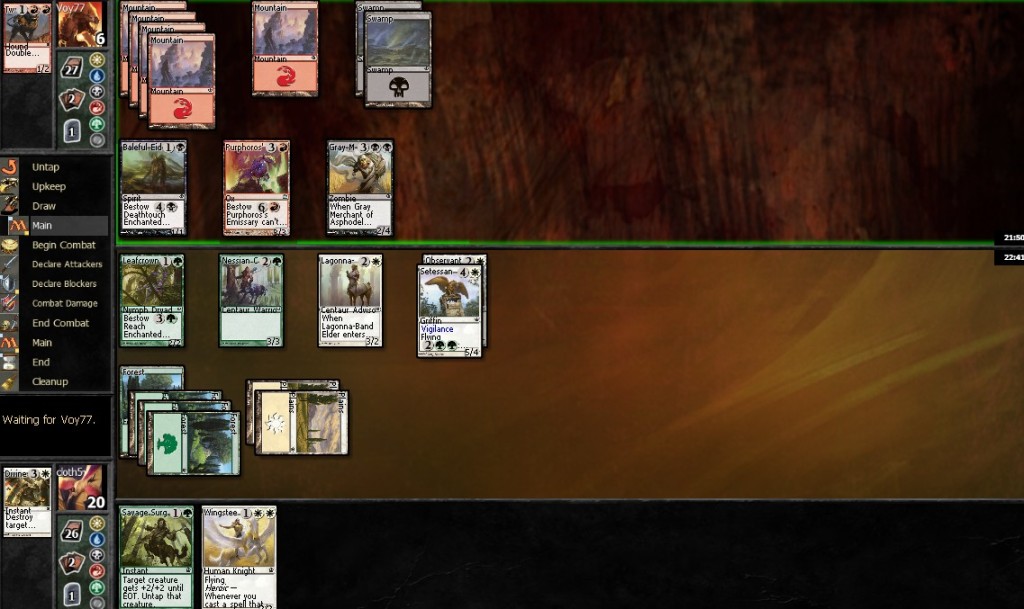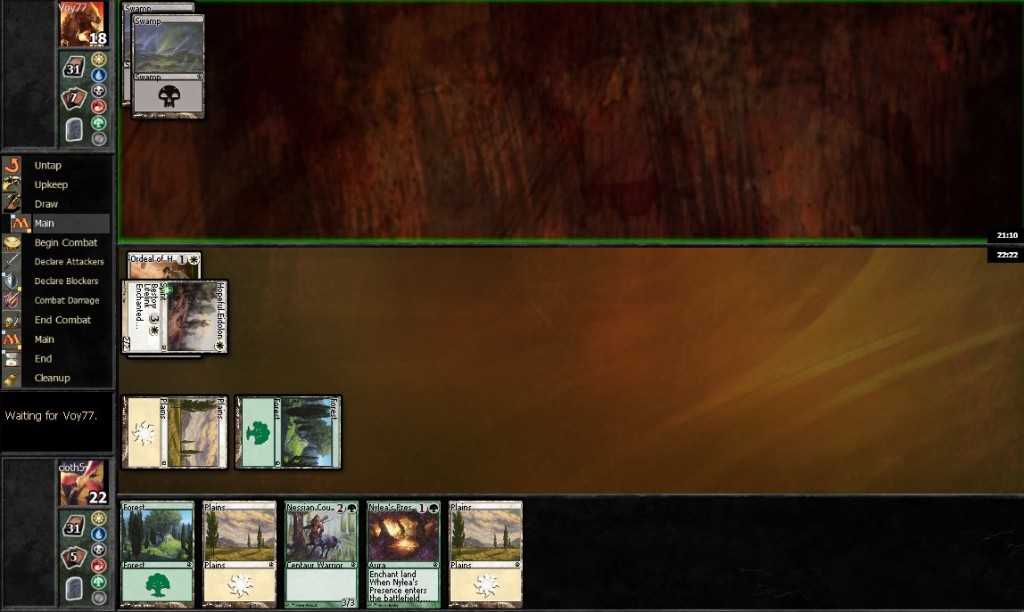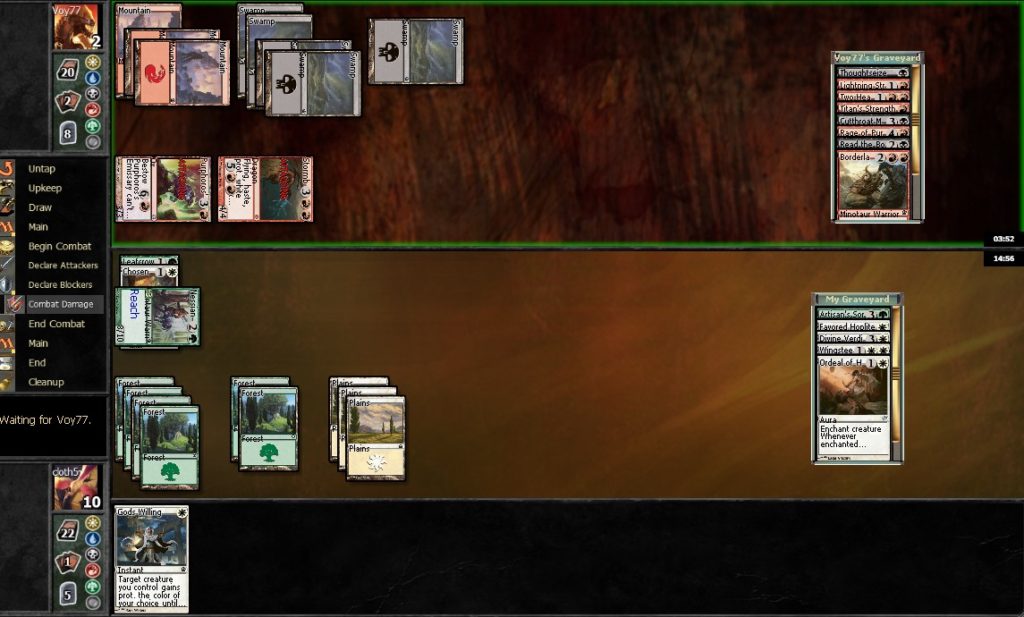by Tony Mei
After my recent improvements in gameplay and drafting I started feeling a bit ambitious.
That’s usually a bad thing. But I’ve been getting a little bit more comfortable with limited, and really wanted to play some Theros. I figured that MODO’s six-ticket phantom sealed was a good way to start.
I’ve played exactly one round of sealed and that was during M14 pre-release. I distinctly recall building a crippled GB deck that featured three Nightwing Shades. I was originally going to run two but I didn’t want any to feel left out. On several occasions, my opponent had to shuffle for me. I’ve gotten slightly better in this regard although I still deal with the annoyed sighs when I drop my deck on the floor for the second time in a match.
I asked my more experienced friends for some advice on Theros Sealed. Their responses ranged from, “Why are you playing that trash format?” to “Pray that you open some bombs.” Unfortunately, none of them could deter me. I happily dropped the entry fee and waited with a healthy dose of misguided optimism—a reoccurring theme in my Magic adventures.
This is the pool I ended up with.
Something went horribly wrong in deck building, but I’m not sure what. I was immediately caught between building RB and GW decks. I had a strong gold card for each combination: Underworld Cerebus and Fleecemane Lion respectively. Blue fielded a Shipbreaker Kraken and a Vaporkin, but not nearly enough playables otherwise.
For some reason, I felt like BR was a trap. My thought process: with only six playable creatures, I didn’t really have the on-field red devotion to consistently make use of Purphoros, God of the Forge. Crucially, I didn’t manage any Dragon Mantles or Two-Headed Cerberuses, taking an early heroic deck out of the question. I felt that my early game presence wasn’t there. Aggressive starts would overrun me. And I had no response to the bounce and removal of other colors.
In retrospect, this might have been horribly bad decision. I passed over several good cards and quite a few more playable ones. But deck building was intensely frustrating, and I ended up wavering between the two combinations until the very end.
In theory, this GW list combined the best of both worlds. Some early creatures and nasty combat trick to start things off. And an assortment of bestow monsters and beefy dudes to cut people down after the initial assault.
This is what I ended up playing:
I had an impressive assortment of combat tricks and five Bestow creatures. Centaur Battlemaster, Setessan Griffin, and the Evangel of Heloid could easily finish games. Going into my matches, I felt a surge of (perhaps misplaced) confidence.
Sometimes it feels like you’re playing against someone that’s doing the exact same thing as you, only much better. Match one: my opponent, also playing GW, slams down a turn three Polukranos, World Eater with the help of Sylvan Caryatid. But I already have a ordeal’d Wingsteed Rider and he’s on a three turn clock. Several moves later, a key Divine Verdict shakes down the legendary hydra, and I’m feeling good.
Eventually, we square off in a duel of the Centaur Battlemasters. I imagine the two creatures rounding on each other, each making rude gestures as they progressive become more powerful. In the end, he beefs his up with Leafcrown Dryad and Heliod’s Emissary. I can’t compete.
I was disappointed. With my slow start he always seemed to be one step ahead. His creatures were a little bit stronger. His bestow creatures had a much greater impact—late game Hopeful Eidolons and Leafcrown Dryads smacked down my hopes for a victory.
Game two, I’m forced to mulligan to five on the play. He runs away with the game shortly thereafter, crushing my hopes of ending my article on a happy note.
Match two was against a strong RB deck and a very competent pilot. Game one is very close, but I manage to grind out a win on the back of a souped-up Setessan Griffin.
In the second game, I start aggressively with a Hopeful Eidolon and an Ordeal, the same play my first opponent used against me to great effect. With the help of some Minotaurs, my opponent stabilizes.
Fast forward several more turns. I make a horrible misplay, attacking in with my champion Battlemaster when I knew I wasn’t able to kill him. He beefs up his Underworld Cerebus with Titan’s Strength and a Dragon’s Mantle and does me in on the counterattack.
By game three, I’m exhausted. We trade blows for a few turns until we end up this situation:
Every turn, my opponent seems to draw another random blocker to intercept my only threat, an 8/10 Nessian Courser. And on every attack, he uses Purphoros’s Emissary to chip in with more damage. After drawing lands for three turns, I’m dead.
Match three can best be summed up by this card:
In both games, my Centaur Battlemaster tears through the ranks of a flimsy UW army. Drained, I finish with a 1-2 match score, going 3-4 in games. Not terrible by any means, and actually pretty good by my own meager standards. I end up with a small sum of Phantom Points, which I can pitch toward my next event. At any rate, I think I’ll explore sealed for a few more weeks. I like the thought that goes into the deck building process, or the lack thereof.
This time around, I definitely played against a higher caliber of opponents. Some of them made some fantastically clever plays, and all were very cognizant of what was going on and what I was trying to do. It gets tiring writing about the same mistakes every week. Decision making and attention to detail aren’t my strong suits. Although one day, after several hundred painful losses, they might be.










